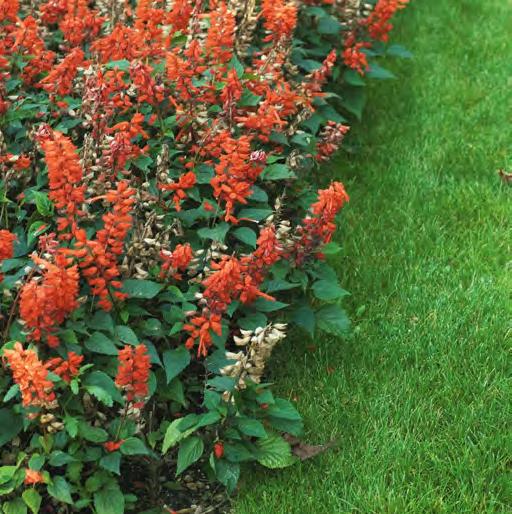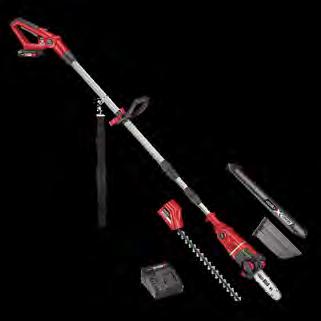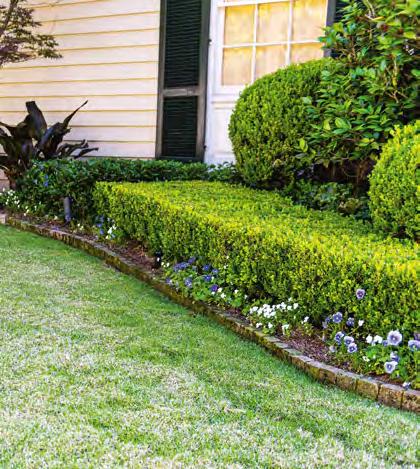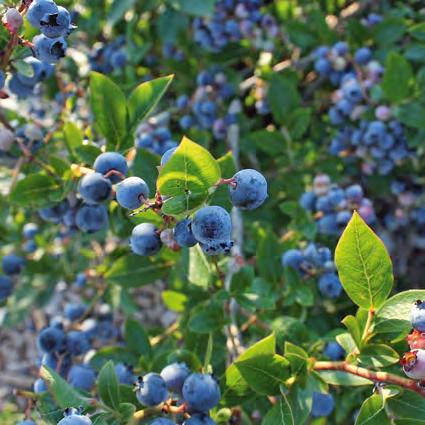
5 minute read
ultimate guide to garden paths
Prepare to prune
Have your secateurs, shears and loppers at the ready – it’s time to trim and tidy in the garden
Autumn is a busy season in the pruning calendar, and a good snip back now will help plants stay strong and healthy. Here’s what will require a reshape before winter sets in.


EXPERT TIP
Clean your tools between jobs to prevent diseases spreading from plant to plant. If a tree is noticeably diseased, sterilise your tools between cuts. Dip your pruning tools in a 10 per cent bleach solution or wipe the blades with a methylated spirits-soaked rag
1 McGregor’s ‘Ergo’ bypass secateurs, $29.98, I/N: 0160434. 2 Yates ‘PruneTec’ pruning & grafting sealant, $34.49/200ml, I/N: 0322861. 3 Fiskars ‘PowerGear X’ 80cm LX98 bypass lopper, $108, I/N: 0323222. 4 Fiskars ‘Powergear X’ large bypass pruner, $54.88, I/N: 8908620. Some products are not available at all Bunnings stores, but may be ordered. Herbaceous perennials Herbaceous perennials are nonwoody plants that die down in winter and grow again in spring. Their roots remain alive over the colder months and send up new shoots as the weather heats up. Herbaceous plants include alstroemerias, echinaceas, delphiniums, peonies and salvias. Once flowering has finished and foliage begins to turn brown, use secateurs to remove dead or browning stems and foliage. Cut right back to the plant’s base.
Mediterranean shrubs Lavender, rosemary and cistus benefit from an annual prune to keep them compact. Plants left unpruned can become ‘leggy’, producing fewer flowers and sparser foliage at the base. Use secateurs to cut plants back by one-third in early autumn. Plants won’t reflower if cut back into old wood.
Plant maintenance
Tip
Prune stems just above the node at a 45º angle
Woody shrubs and evergreen trees Prune shrubs and trees in early autumn to ensure the new growth has time to harden off before winter. “Loppers are more powerful than pruners and more accurate than saws, so are ideal for cutting larger branches,” says Bruce Underwood, NZ sales manager for Fiskars. “Trees recover more quickly from larger cuts when they are smooth and clean cut and don’t damage the branch collar, or the ‘shoulder’ branch and the trunk.” If a tree’s branch is large, remove the bulk of the branch first and then cut closer to the trunk. “If you cut close to the trunk from the start and the branch falls, it can damage the tree,” says Bruce. “To cut the remaining part of the branch, cut downwards at a slight outward angle, about 2cm away from the trunk.” }
1 2
3
4



1

3 4
5

Hedges Prune hedges in early autumn. For smaller hedges, use shears for precise cuts, and keep the shears parallel to the hedge when snipping. Trim from the bottom up so that the clippings fall cleanly to the ground. Large hedges should be wider at the bottom and tapered at the top to allow light to reach the base of the hedge. If light is blocked at the base, the foliage may die off. A powered hedge trimmer is ideal for large hedges.

Lightly cutting back blueberry bushes can lead to new growth, on which the fruits form

Blueberries Blueberry plants need very little pruning, but they will benefit from a quick trim to shape and a thinning out when growth becomes thick and congested. “Pruning of blueberry plants is best done in autumn or winter during a dry spell of weather,” says Kate Marshall of Waimea Nurseries. Raspberries Autumn-fruiting raspberry varieties like ‘Heritage’ are the easiest to prune, as all of the canes should be pruned to ground level after fruiting each autumn or winter, says Kate. “Summer-bearing varieties like ‘Waiau’ need selective pruning to remove older canes (also done in autumn or winter), which are identified as being thicker and usually have grey-brown bark compared to the green-brown bark of new canes.”
Blackberries Cultivated blackberry varieties like the thornless ‘Navaho’ and ‘Black Satin’ produce fruit each summer on the new canes that grew after the previous summer’s harvest. “The canes which have produced a crop will die off and should be pruned off at ground level immediately after harvest or in the autumn,” says Kate. “The new canes can be tip pruned in spring to encourage branching and more berry production.”
Stonefruit trees Pruning is best done after fruiting in late summer or autumn to avoid the risk of bacterial blast (a disease that causes weeping sap), which is more prominent in winter. Prune on a dry day. “Prune to an open vase shape and remove any dead, diseased or damaged wood,” says Kate. “I would also suggest a pruning paint.” ◆
1 Ryobi ‘ONE+’ 18V 1.3Ah hedger and shear kit, $189, I/N: 0038799. 2 Ozito ‘PXC’ 18V hedge trimmer, $99/skin only (battery and charger sold separately), I/N: 3380872. 3 Fiskars ‘PowerGear X’ UPX86 telescopic tree pruner, $199, I/N: 3350854. 4 Ozito 7.2V lithium-ion cordless hedge trimmer, $79.98, I/N: 0873009. 5 Ozito ‘PXC’ 18V pole pruner & hedge trimmer kit, $229, I/N: 0204658.
Cutting-edge maintenance Secateurs, shears and loppers work best when sharp; a sharp blade will cut cleanly through stems and branches without damaging them. If your tools are blunt, use a sharpening stone or a secateur and lopper sharpener to return them to top condition.
Multi-Sharp secateur/lopper sharpener, $19.98, I/N: 0525401 Trojan 25mm x 50mm x 200mm
steel tool sharpening
stone, $12.98, I/N: 5760314
Norton 113mm curved stone sharpener, $27.29, I/N: 0597879
Watch it!
About to trim trees? Follow these tips: bunnings.co.nz/how-to-prune-trees











